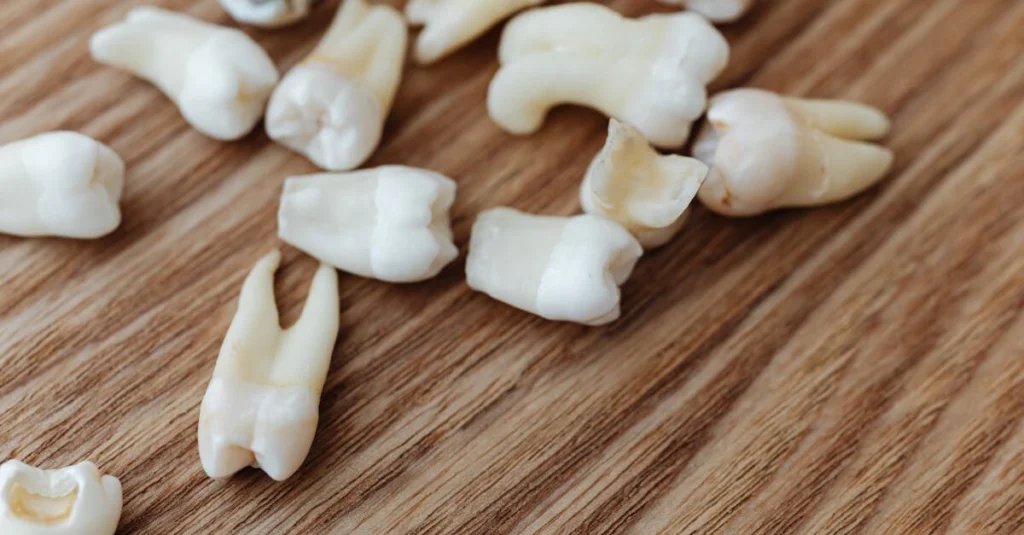Dental photography captures high-quality images of teeth, gums, and oral structures using specialised cameras and lighting equipment. This technique supports accurate diagnosis, treatment planning, and patient education whilst providing essential documentation for modern dental practices. Professional dentists utilise macro lenses, ring flashes, and dental mirrors to achieve consistent, detailed photographs that enhance communication and improve patient care outcomes.
Understanding the Basics of Dental Photography
Dental photography uses specific tools and techniques to capture accurate records of a patient’s oral condition. Standard equipment includes a DSLR or mirrorless camera with a macro lens, a ring or twin flash, cheek retractors, and mirrors. Accurate color capture and image sharpness rely on proper lighting and settings, such as ISO 100, aperture f/22, and shutter speed 1/200 seconds.
Camera stabilization helps avoid blurry images during case documentation and patient education. Practitioners in Tampa, Florida, often source specialized mirrors, retractors, and intraoral photographic kits from established suppliers like ProDENT. These tools support efficient case documentation, diagnostics, and patient communication.
Clear images require consistent background selection, patient positioning, and adherence to infection control protocols. Leading U.S. dental suppliers, including ProDENT, recommend autoclavable mirrors and retractors for infection prevention. Correct workflow includes equipment cleaning, patient consent, and secure file management for HIPAA compliance.
Dental teams in general dentistry, orthodontics, and prosthodontics use professional imaging to track treatment and communicate with patients and specialists. Practices that use reliable products from Tampa-based distributors like ProDENT optimize both imaging quality and equipment longevity.
Essential Equipment for Dental Photography
Dental photography requires precision tools to produce sharp, reliable images for case documentation and communication. Professional-grade equipment helps achieve consistent, high-quality results and supports accurate color representation for clinical use.
Choosing the Right Camera
Selecting a camera for dental photography requires DSLR or mirrorless models with manual exposure control. Major brands like Canon and Nikon supply models compatible with macro lenses for close-up shots of teeth and soft tissue. Full-frame sensors support higher resolution but APS-C sensors also produce clinical-quality images. Models with fast autofocus, Wi-Fi, and RAW file support streamline workflow in busy practices. ProDENT in Tampa, Florida supplies dental-specific camera kits that include configured macro lens and flash options for direct clinical application. Intraoral cameras with a minimum of 1.3-megapixel resolution allow easy chairside documentation if space is limited.
Importance of Lenses and Accessories
Lenses with macro capability enable clear detail capture in dental images. 100mm macro lenses produce true-to-life representation of intraoral structures, with 60mm macro lenses fitting smaller operatory spaces. Ring flashes or twin flashes ensure uniform lighting and minimize shadows during retraction. Cheek retractors, intraoral mirrors, and occlusal photography mirrors help reveal occlusal surfaces and lingual anatomy. Gray cards ensure accurate white balance, supporting reliable shade matching. ProDENT offers autoclavable retractors and mirrors made for repeated clinical sterilization. Camera mounting stands, protective barriers, and patient drapes are available from ProDENT to maintain infection control and prolong equipment lifespan.
Step-By-Step Guide on How to Take Dental Photography
Dentists produce accurate case documentation and improve patient education using dental photography. Following each procedural step ensures sharp and reliable images for case tracking and professional communication.
Preparing the Patient and Setting
Staff informs patients about the dental photography process before image capture. Operators seat patients in an upright position with chin level and mouth open for intraoral images. Staff removes all removable prosthetics, makeup, and jewelry to prevent distraction and reflection. Blue or gray patient bibs and uncluttered backgrounds standardize color and focus. Operators disinfect cheek retractors, mirrors, and accessories, choosing autoclavable models from dental suppliers like ProDENT in Tampa, Florida. Adequate infection control supports clinical workflows for efficient transitions.
Mastering Lighting Techniques
Effective lighting exposes dental tissues without creating glare or shadows in digital photographs. Dental teams select ring flashes or twin flashes for optimal soft light, both available from specialized suppliers like ProDENT. Operators set light intensity to reveal enamel, dentin, and gingival tissue color with accuracy. Photography teams avoid ambient overhead lights and windows in the image field to maintain consistent white balance and minimize color distortion. Reliable lighting exposes carious lesions and treatment areas for consistent results across appointments.
Achieving Proper Positioning and Angles
Clinical teams use standardized protocols for subject orientation and image perspective. Operators align horizontal reference points, such as the incisal edges or occlusal planes, parallel to the camera sensor. Assistants hold mirrors in a stable position to display posterior teeth or palatal surfaces, using reflective autoclavable models offered by ProDENT for clear detail. Consistent camera-to-subject distance, typically 20–30 cm for intraoral photography, prevents lens distortion and preserves anatomical proportions. Multiple views—including frontal, lateral, and occlusal—support comprehensive case documentation for dental records.
Best Practices for Consistent and High-Quality Images
Consistent and high-quality dental images improve diagnosis and patient communication. Standardizing processes and using professional equipment support imaging continuity across patient cases.
Managing Infection Control
Maintaining infection control in dental photography protects patients and staff from cross-contamination. Dental professionals use autoclavable cheek retractors, mirrors, and photographic contrasters to meet hygiene standards. Covering camera bodies and flashes with disposable barriers limits exposure to bodily fluids. Disinfecting non-autoclavable components with EPA-registered wipes after each patient session maintains sterility. ProDENT in Tampa, Florida supplies autoclavable and single-use accessories designed for strict infection control. Separating photography supplies from standard operatory sets streamlines cleaning and prevents accidental reuse.
Optimizing Image Storage and Workflow
Efficient image storage and workflow management simplify case documentation and retrieval. Shooting images in RAW or highest-quality JPEG format preserves detail for diagnosis and records. Transferring photos immediately after sessions to encrypted practice management systems or HIPAA-compliant cloud services prevents loss and protects patient information. Labeling files with patient ID, procedure date, and view description ensures easy tracking. Dental practice software from leading suppliers supports DICOM or universal image format integration, connecting images to electronic health records. ProDENT Tampa offers workflow consultation and digital imaging products for efficient storage, backup, and retrieval needs. Systematic storage practices guarantee all dental team members have access to consistent photographs for ongoing treatment planning.
Common Mistakes to Avoid in Dental Photography
- Using Incorrect Camera Settings
Incorrect camera settings lead to blurry or poorly exposed dental images. Selecting the manual mode and setting an aperture of f/22 (for intraoral shots) and white balance matching the flash color temperature improves clarity and color accuracy.
- Neglecting Lens and Sensor Cleaning
Dirty lenses or sensors introduce spots and distortions in dental photographs. Cleaning optics with lens wipes and sensor-safe products before each session prevents image-quality issues.
- Failing to Use Macro Lenses
General-purpose lenses can’t capture the fine details of dental anatomy. Macro lenses, available from suppliers like ProDENT in Tampa, Florida, offer the magnification and sharpness dental professionals require.
- Overlooking Lighting Quality
Inadequate or uneven lighting produces unwanted shadows and color shifts. Using professional ring or twin flashes ensures uniform illumination, which is critical for accurate case documentation.
- Ignoring Patient Preparation
Unprepared patients, such as those with lipstick, food debris, or unseated cheek retractors, affect photo clarity. Removing distractions and positioning retractors properly avoids image inconsistencies.
- Skipping Background Standardization
Inconsistent backgrounds confuse clinical comparison and reduce professionalism. Standardized backgrounds—plain blue or black, for example—maintain alignment with consistent visual documentation protocols.
- Inconsistent Image Orientation
Uneven angulation or variable camera distances result in distorted and unusable images. Adhering to established protocols with fixed camera-to-patient distances keeps photos reliable for case evaluation.
- Disregarding Infection Control
Contact with non-sterile equipment risks cross-contamination. Using autoclavable mirrors and retractors, as supplied by ProDENT Tampa, meets infection control standards for dental offices in the United States.
Conclusion
Dental photography is more than a technical skill—it’s a powerful tool that elevates patient care and professional communication. By investing in the right equipment and refining their techniques, dental professionals can consistently capture images that support accurate diagnosis, treatment planning, and patient education.
A commitment to best practices in dental photography not only safeguards patient safety but also builds trust and credibility within the practice. As technology advances, those who master these skills will continue to set themselves apart in an increasingly visual and competitive field.
Frequently Asked Questions
What is dental photography and why is it important for dentists?
Dental photography involves taking high-quality images of the mouth and teeth to document cases, track progress, and enhance communication with patients and dental teams. It helps in treatment planning and patient education, improving both trust and outcomes.
What equipment do I need for dental photography?
Essential equipment includes a DSLR or mirrorless camera with a macro lens, ring or twin flash for lighting, cheek retractors, and mirrors. Using autoclavable tools is important for maintaining infection control standards.
Why is lighting important in dental photography?
Proper lighting, especially from ring or twin flashes, ensures clear, sharp images with accurate colors and minimal shadows or glare. Good lighting is essential for showing fine details needed for diagnosis and documentation.
How should patients be prepared for dental photos?
Patients should remove distractions like lipstick or facial jewelry. Use cheek retractors and mirrors as needed, and standardize background settings to ensure consistency and clarity in the images.
What are common mistakes to avoid in dental photography?
Common mistakes include using incorrect camera settings, neglecting equipment cleaning, poor lighting, forgetting to standardize backgrounds, and not following infection control protocols, all of which can compromise image quality and safety.
Why is infection control important in dental photography?
Strict infection control is crucial to prevent cross-contamination between patients. Always use autoclavable tools and disposable barriers, and follow established dental hygiene protocols when taking photos.
How should dental photographs be stored?
Store images in secure, privacy-compliant systems, using RAW or high-quality JPEG formats to preserve detail. This helps protect patient information and ensures images remain useful for documentation and treatment planning.
Can dental photography benefit all dental specialties?
Yes, dental photography supports general dentists and specialists alike by improving treatment tracking, case presentations, referrals, and communication. High-quality images are valuable for all dental team members.



 Johnford Hillarrio is a health and fitness advocate contributing to My Healthy Living and Strategies, where he shares his passion for promoting physical and mental well-being. With a background in exercise science and nutrition, Johnford focuses on helping readers find sustainable ways to improve their overall health. His content offers actionable tips on fitness routines, healthy eating habits, and maintaining mental clarity.
Johnford Hillarrio is a health and fitness advocate contributing to My Healthy Living and Strategies, where he shares his passion for promoting physical and mental well-being. With a background in exercise science and nutrition, Johnford focuses on helping readers find sustainable ways to improve their overall health. His content offers actionable tips on fitness routines, healthy eating habits, and maintaining mental clarity.